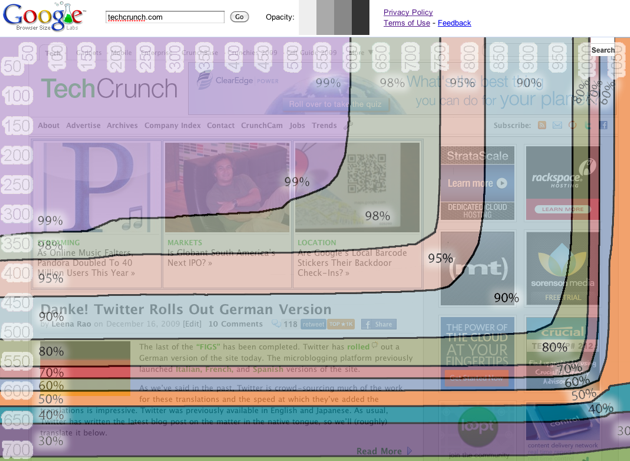 Most of us take them for granted, but web designers have to deal with a myriad of frustrating problems on a daily basis. From browsers that ignore standards to different screen resolutions, there’s a lot for them to grapple with. Today, Google has launched a new addition to its collection of Labs tools called Browser Size that’s meant to help alleivate one of these headaches.
Most of us take them for granted, but web designers have to deal with a myriad of frustrating problems on a daily basis. From browsers that ignore standards to different screen resolutions, there’s a lot for them to grapple with. Today, Google has launched a new addition to its collection of Labs tools called Browser Size that’s meant to help alleivate one of these headaches.
One issue web designers face is ensuring that they keep their important content “above the fold” — you don’t want users to have to scroll down to see the hottest story or a call to action. Browser Size helps with this, by visualizing just what percentage of the Internet-browsing population can see a certain part of your page. This is related not only to screen resolution, but also how large people keep their browser windows.
Using the tool is simple: type a URL in at the top of the screen, and the site will load your webpage in the background. It will then overlay a semi-transparent graphic depicting how much of the web’s population can view each section of your page without scrolling. The results aren’t particularly exciting — the further down or to the side you go, the fewer people can see it. But this will certainly be helpful for web designers.
The data is generated based on the browser size of users who visit Google.com. Google says that it found that the install rate for Google Earth increased by a whopping 10% simply by moving it 100 pixels higher on the page.
